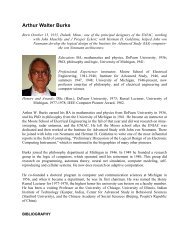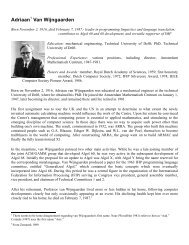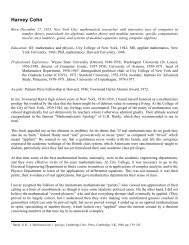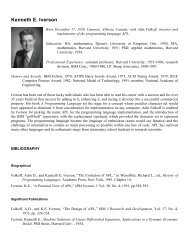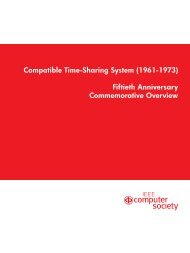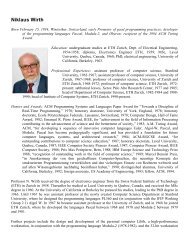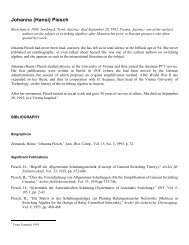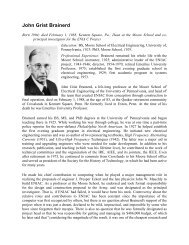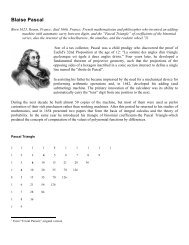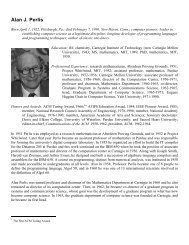L - Walden-family.com
L - Walden-family.com
L - Walden-family.com
Create successful ePaper yourself
Turn your PDF publications into a flip-book with our unique Google optimized e-Paper software.
l<br />
Bolt Beranek and Newman Inc.<br />
Since message numbers and reserved storage are so critical<br />
in the system, very stringent and careful procedures were<br />
developed to account for a lost messa~e. The source IMP keeps<br />
track of all messages for which a RFNM has not yet been received.<br />
When the RFNM is not received for too long (presently about 30<br />
seconds), the source IMP sends a control message to the dessination<br />
inquiring about the possibility of an in<strong>com</strong>plete transmission.<br />
The destination responds to this message by indicating whether<br />
the message in question was previously received or not. The source<br />
IMP continues inquiring until it receives a response. This technique<br />
guarantees that the source and destination IMPs keep their<br />
message number sequences synchronized and that any allocated<br />
space will be released in the rare case that a message is lost<br />
in the subnetwork because of a machine failure.<br />
:]<br />
l<br />
,<br />
l<br />
j<br />
1<br />
]<br />
J<br />
1<br />
l<br />
\<br />
'<br />
2.3 IMP-to-IMP Channel Protocol<br />
2.3. l Logical Channel Protocol<br />
A technique has been adopted for IMP-to-IMP transmission<br />
control which improves efficiency by 10-20% over the original<br />
separate acknowledge/timeout/retransmission approach described<br />
in [1]. In the new scheme, which is also used for the Very Distant<br />
Host [4], each physical inter-IMP circuit is broken into a number<br />
of logical channels, currently eight in each direction. Acknowledgments<br />
are returned piggybacked on normal network traffic in a<br />
set of eight acknowledgment bits, one bit per channel, contained<br />
in every packet, thus requiring less bandwidth than the original<br />
method of sending each acknowledge in its own packet. In<br />
addition, the period between retransmissions is dependent upon<br />
the volume of new traffic. Under light loads the network has<br />
minimal retransmission delays, and the network automatically<br />
adjusts to minimize the interference of retransmissions with<br />
new traffic.<br />
[<br />
.J<br />
.J<br />
]<br />
J<br />
J<br />
l l<br />
J<br />
J<br />
2-8 2/73<br />
l<br />
J






